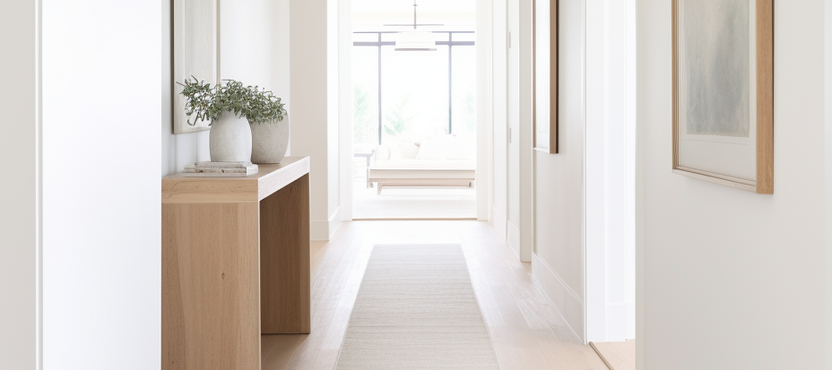How to Master the Open Concept Space Design: A Complete Guide for Interior Enthusiasts
- Beril Yilmaz

- Jan 3
- 4 min read
The open concept space has transformed modern homes, creating environments that emphasize both comfort and functionality. These spacious layouts promote interaction while allowing families to enjoy their surroundings. As these designs grow in popularity, understanding how to optimize them becomes crucial.
This guide will enhance your knowledge and approach toward open concept spaces. Whether you're renovating or starting fresh, key elements will help you blend style with practicality.
1. Open Concept Space: Understanding the Essence

An open concept space seamlessly connects different functional areas of a home, creating a flow that enhances social interaction and invites natural light. According to a study by the National Association of Home Builders, about 80% of homebuyers prefer open floor plans because they feel more inviting and spacious.
However, open layouts bring challenges. Sound can travel easily, clutter may be visible from various angles, and arranging furniture requires careful thought to maintain warmth and organization. Insight into these aspects will guide your design decisions.
2. Open Concept Space: Planning Your Layout

The layout you select is critical to the space's functionality. Begin by analyzing how each zone will function. For example, in a layout that combines a kitchen, dining area, and living room, consider activities within each zone.
Element 1: Zones
Distinct zones can be established through furniture arrangements, rugs, or color schemes. For instance, a sectional sofa might define the living area, while a large dining table clearly marks the dining zone.
Element 2: Flow
It's vital to ensure a natural flow between the areas. People should navigate easily without feeling cramped. Position furniture to encourage movement rather than block it.
3. Open Concept Space: Styling with Purpose

Styling an open area can feel overwhelming, but it can become cohesive with intentional choices.
Choosing a Color Palette
Select a color palette that extends across the zones. Soft neutrals serve as warm backgrounds, but don’t shy away from vibrant accessories. A study by Houzz found that using a common color theme can tie a space together, making it feel designed rather than scattered.
Incorporating Textures
Combine different textures to boost visual interest. Mixing wood, metal, and soft fabrics creates depth. For example, a chunky knit throw on a leather couch can add warmth while contrasting sleek surfaces.
Statement Pieces
Utilize bold furniture or decor as conversation starters. A bright sofa or an oversized piece of art can serve as the space’s anchor, making the area feel both inviting and intriguing.
4. Open Concept Space: Lighting Strategies

The right lighting brings an open concept design to life. Here are strategies to enhance atmosphere and functionality.
Natural Light
Maximize natural light sources. Use sheer curtains to maintain privacy while allowing light to flow. Mirrors can reflect light effectively and create the illusion of more space.
Layered Lighting
Incorporate varied light sources for depth. A mix of overhead lights, table lamps, and sconces enhances the mood. Adjusting these for different times of the day can create the perfect ambiance for any activity.
Focused Lighting
Highlight special areas with dedicated lighting. For instance, pendant lights over a kitchen island or a chandelier in the dining area can act as stunning focal points.
5. Open Concept Space: Embracing Flexibility

Flexibility in your open concept layout ensures it adapts to your family’s needs. Here are some ideas to boost versatility:
Multi-Functional Furniture
Select pieces that serve multiple purposes. An ottoman can provide extra seating, while a console table can function as both a buffet during gatherings and a workspace.
Modular Arrangements
Choose modular furniture that can be rearranged. For example, adaptable sofas allow you to change the layout according to various activities, like game nights or family gatherings.
6. Open Concept Space: Organizing Your Space

An open concept area can quickly become cluttered. Here are tips to maintain organization:
Storage Solutions
Opt for furniture that blends storage into design. For instance, a coffee table with hidden compartments or a bench with storage can help keep items out of sight.
Declutter Regularly
Incorporate decluttering into your routine. A study indicates that regular decluttering can enhance space functionality by up to 30% while keeping the environment fresh and pleasant.
Designate Drop Zones
Create specific areas near entryways for items like bags and shoes. This prevents clutter from spreading and makes essentials easy to find.
7. Open Concept Space: Navigating Challenges

Designing an open concept space can be rewarding, but challenges arise.
Managing Noise Levels
To reduce noise, consider using sound-absorbing elements such as rugs or upholstered furniture. Soft materials can significantly lower noise impact, promoting a cozier atmosphere.
Defining Privacy
Creating visual barriers is crucial for maintaining private areas. For example, using tall plants or furniture placement can delineate spaces without constructing walls.
Keeping It Cohesive
Achieving a harmonious feel is essential. Ensure every design aspect, from color to texture to furniture style, aligns. Regularly reassess your design to maintain balance and prevent clashes.
FAQ
What is an open concept space?
An open concept space merges multiple functional areas within a home, such as the kitchen, dining, and living areas, into a cohesive design without traditional dividing walls.
How do I create distinct zones in an open concept space?
You can create distinct zones through strategic furniture arrangements, rugs, and differing wall colors or textures, allowing them to maintain their identities while feeling connected.
What are some color schemes that work well in open concept spaces?
Soft neutrals provide a warm base, allowing for vibrant accents through accessories. Consistency in color ties various zones together, enhancing coherence.
Designing an open concept space offers endless possibilities. Embrace the adventure and remember: the goal is to create a home that aligns with your lifestyle and reflects your personality.
If you are seeking help to transform your space into a beautifully designed open concept area, BY Design And Viz is here to assist! Our professional interior design services can guide you in crafting the ideal environment tailored to your preferences.
Start your journey today and unlock the potential of your open concept space!


































